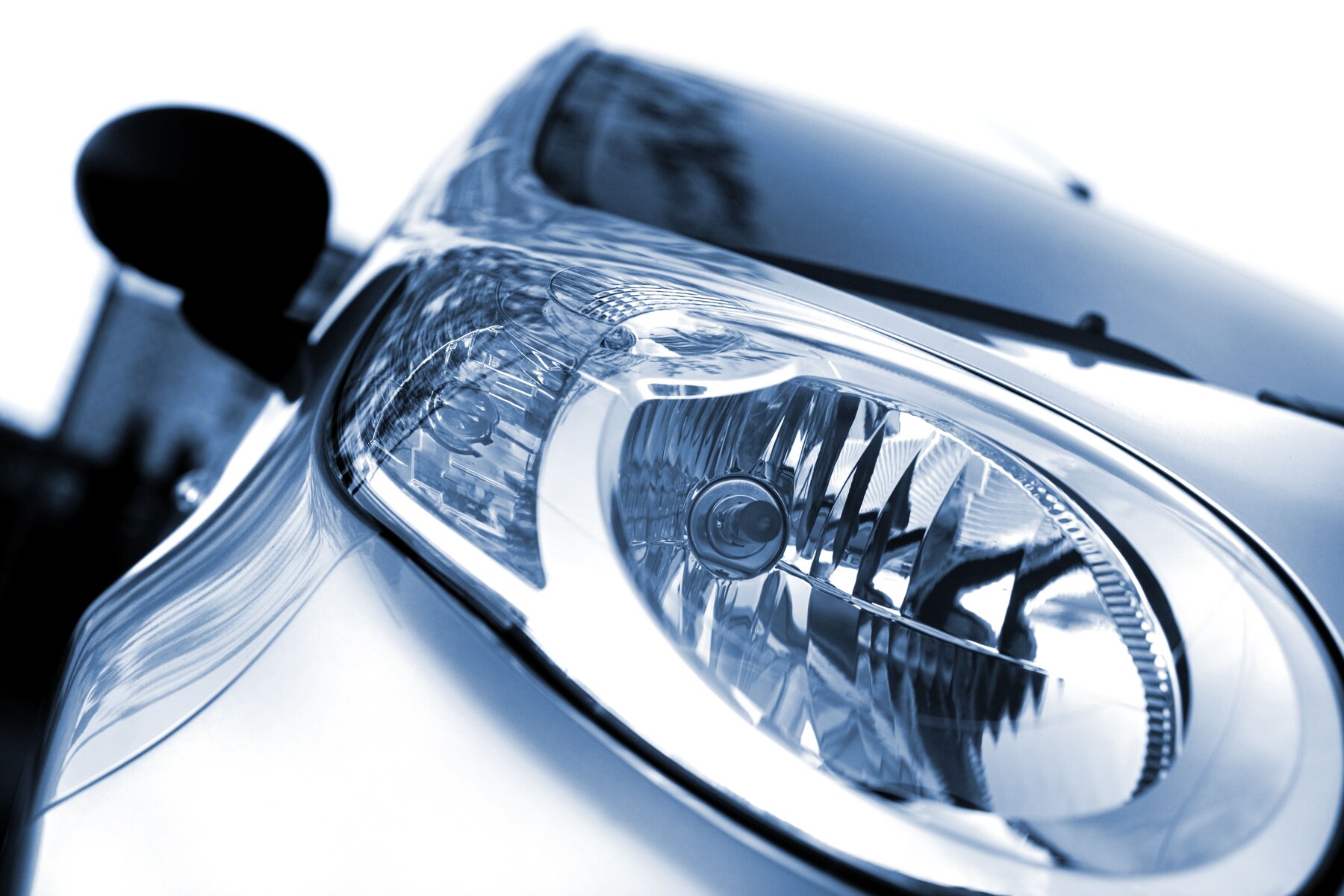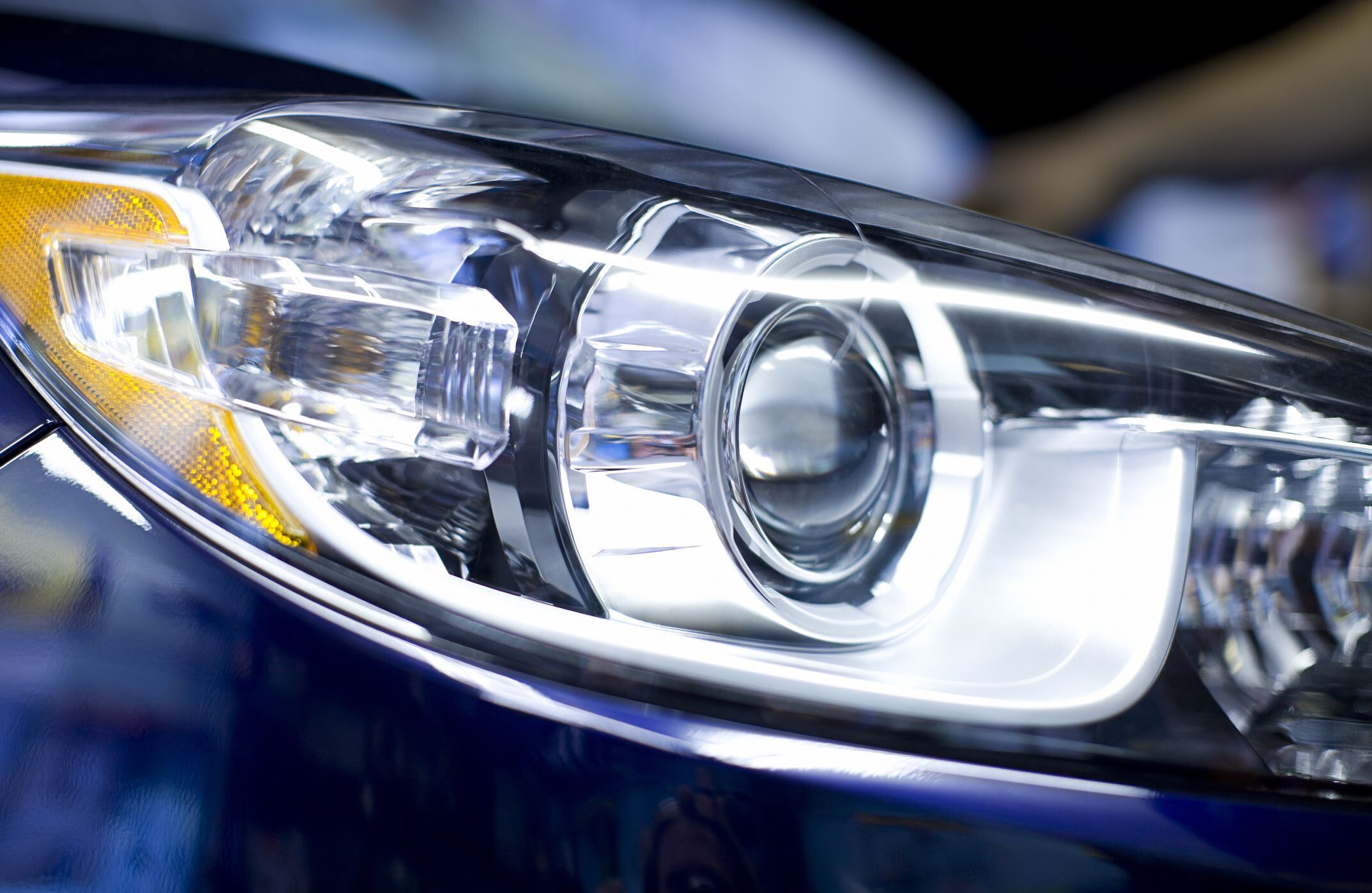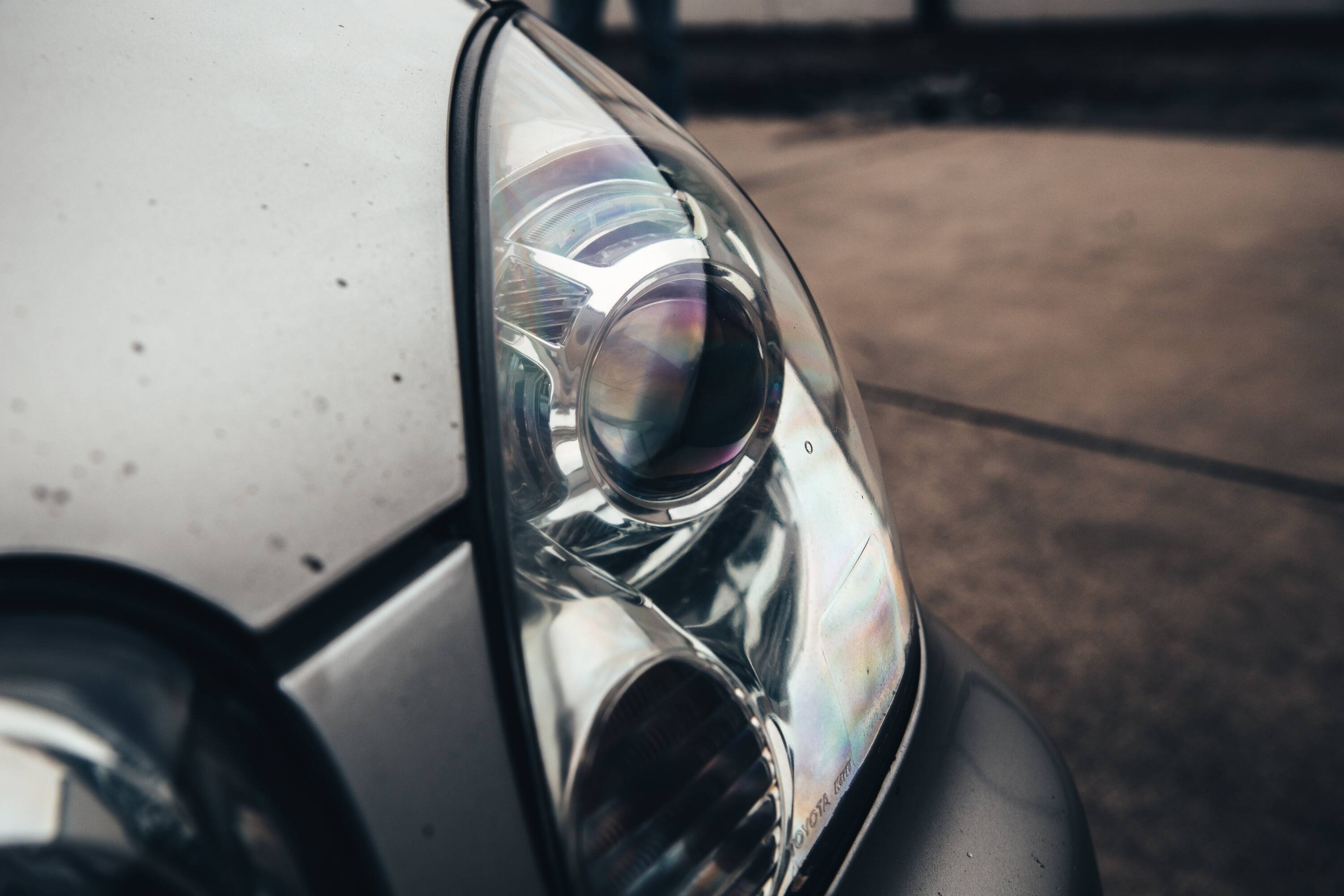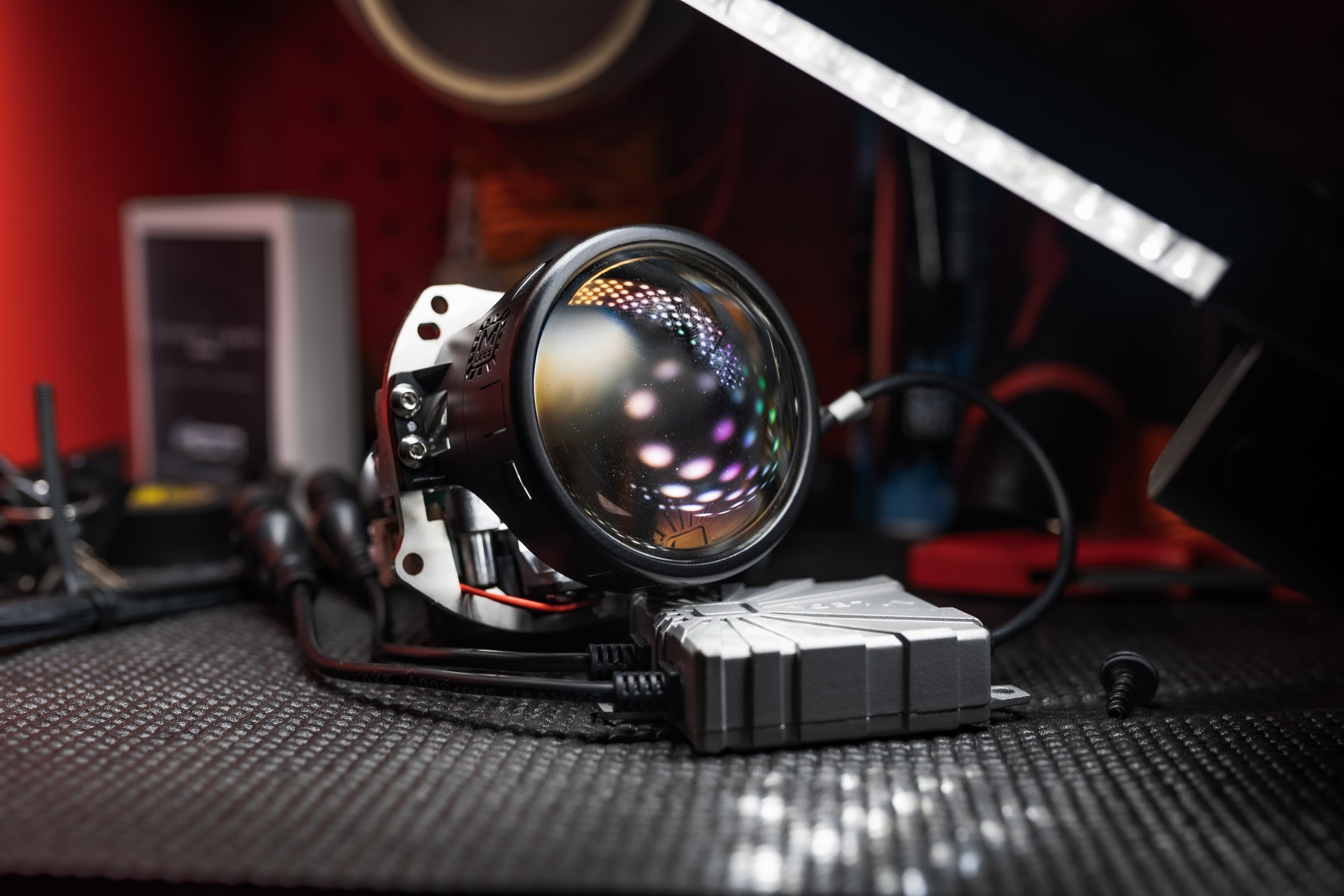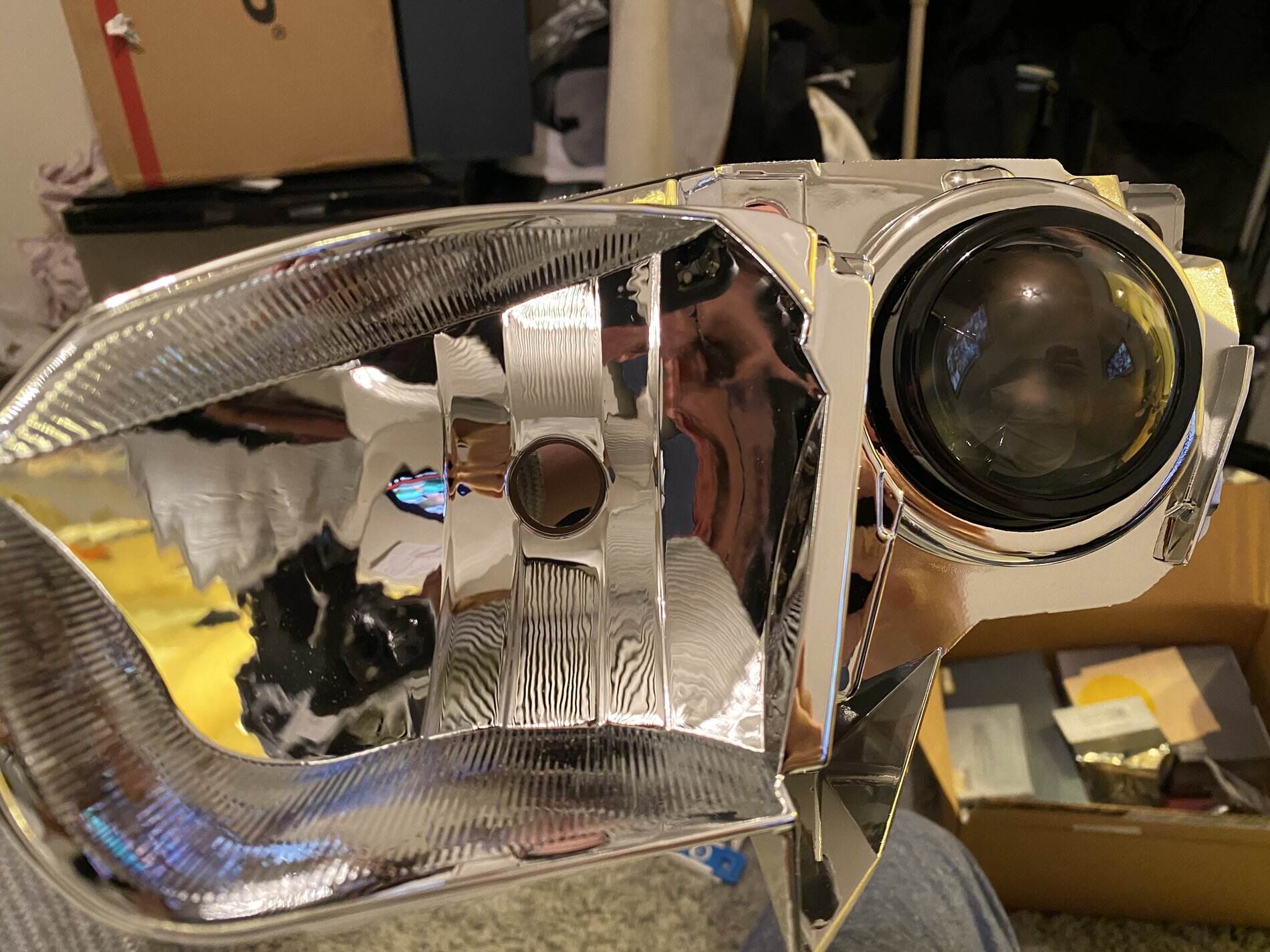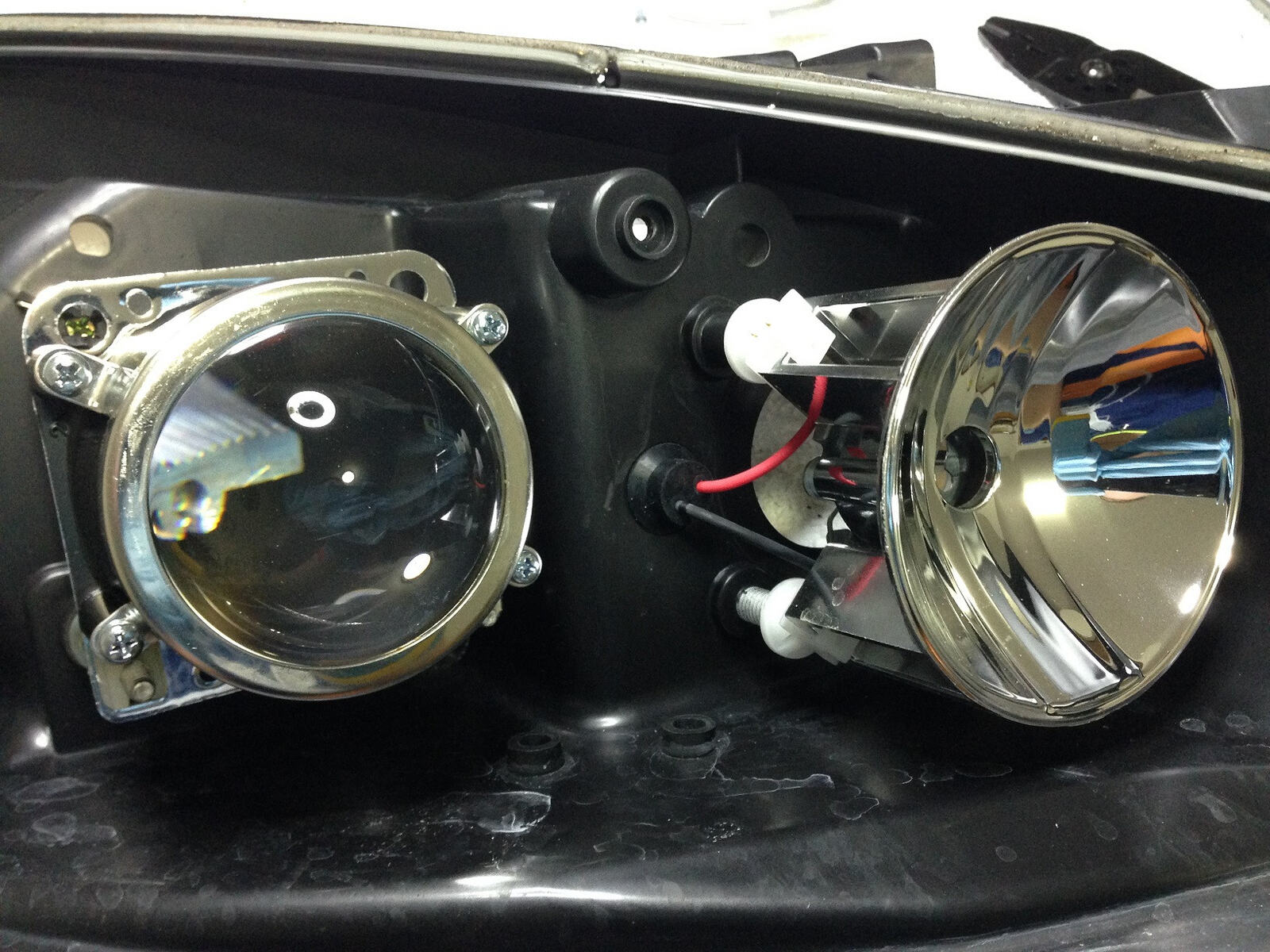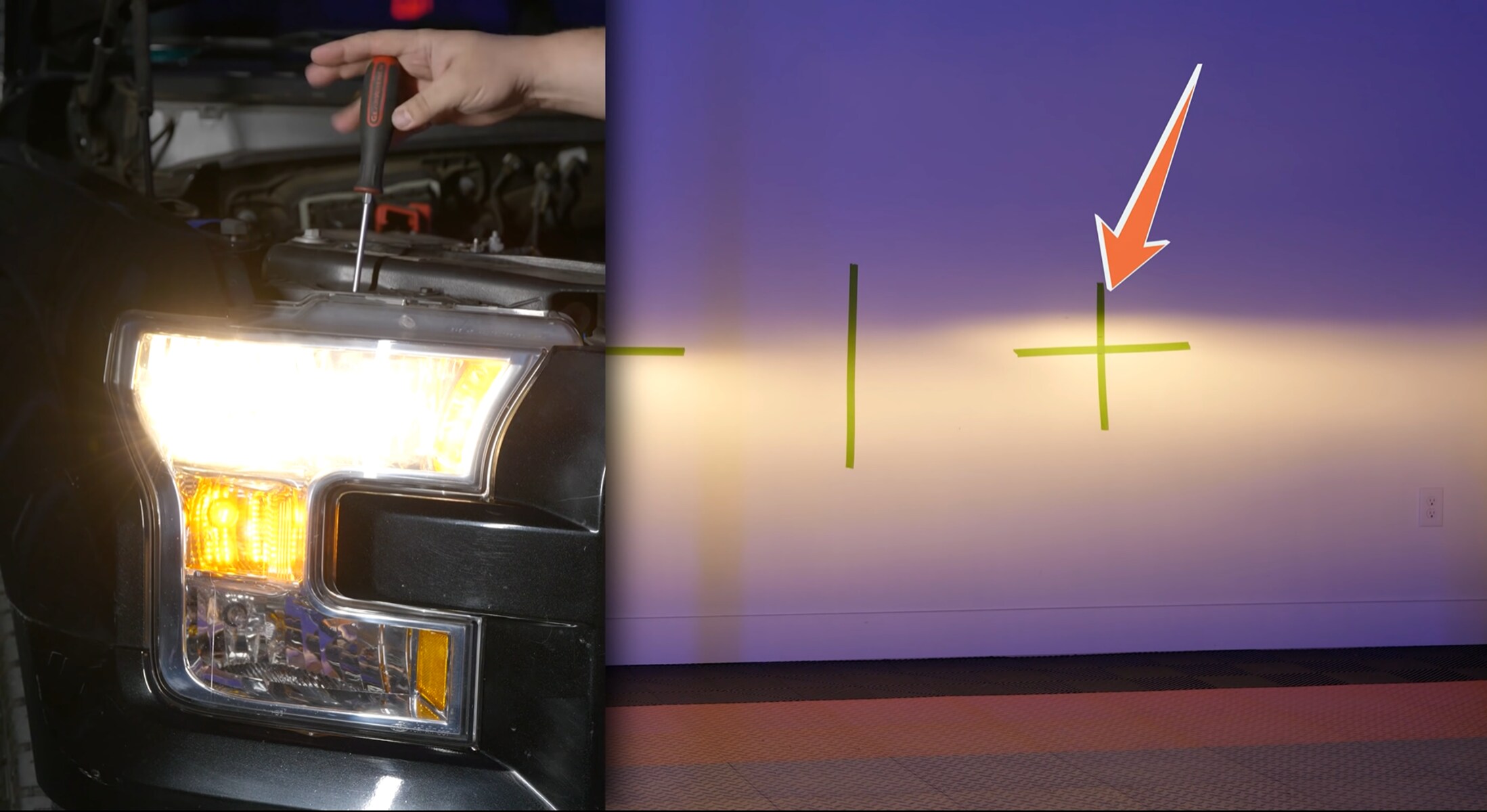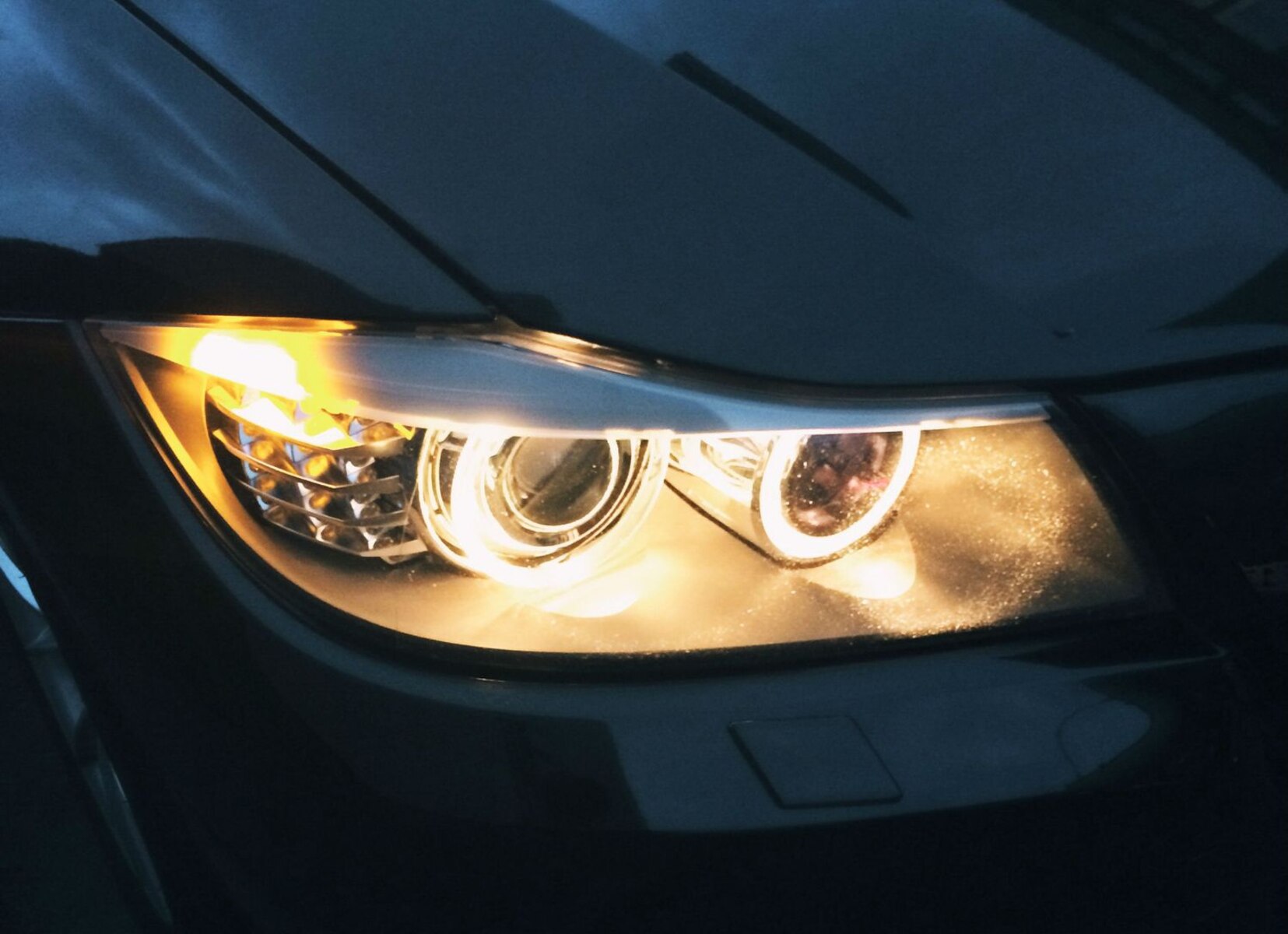What Are LED Projector Headlights
LED projector headlights are a modern and advanced lighting technology that has gained popularity in the automotive industry in recent years. These headlights combine the benefits of LED (Light Emitting Diode) technology with the precision and focus of projector lenses, resulting in improved visibility and a sleek appearance.
Unlike traditional halogen headlights, which rely on a filament to produce light, LED lights use a semiconductor material that emits light when an electric current is applied. This semiconductor technology allows LED lights to be more energy-efficient and durable than halogen lights.
The key feature of LED projector headlights is the integration of a projector lens. This lens helps to focus the light beam and project it onto the road in a concentrated and uniform manner. The result is a clearer and brighter illumination, allowing drivers to have better visibility and increased safety on the road.
LED projector headlights also offer a more contemporary and stylish look compared to traditional headlights. The sleek design and sharp cutoff line of the light beam give vehicles equipped with LED projectors a distinct and modern appearance.
Furthermore, LED projector headlights are known for their longevity. LED lights have a longer lifespan than halogen lights, lasting up to ten times longer. This means that drivers do not have to worry about frequent bulb replacements, saving them time and money in the long run.
Additionally, LED lights are more energy-efficient, consuming less power while providing a brighter output. This not only reduces the strain on the vehicle’s electrical system but also helps to conserve fuel and decrease the carbon footprint.
In summary, LED projector headlights are a cutting-edge lighting technology that combines the benefits of LED with the precision of projector lenses. They offer improved visibility, a sleek appearance, durability, energy efficiency, and longevity compared to traditional headlights. As a result, many car enthusiasts and safety-conscious drivers are opting for LED projector headlights to enhance their driving experience and add a touch of modernity to their vehicles.
What are Projector Headlights
Projector headlights are a type of automotive headlight that utilize a unique lens system to produce a focused and controlled beam of light. Unlike traditional headlights, which disperse light in a scattered pattern, projector headlights use a specially designed lens to concentrate the light into a more defined and concentrated beam. This focused beam increases visibility and reduces glare for both the driver and oncoming traffic.
The lens system in projector headlights works by capturing light emitted from the light source, such as a halogen bulb or LED, and directing it through a series of mirrors and lenses. These components help to shape and focus the light before projecting it onto the road ahead.
One of the main advantages of projector headlights is their improved light output and distribution. The focused beam produced by projector headlights provides a longer and wider illumination range, allowing drivers to see further down the road and have better peripheral vision. With this enhanced visibility, drivers can react more quickly to potential hazards and navigate safely in all lighting conditions, including fog and rain.
Another benefit of projector headlights is their reduced glare. The lens system helps to minimize the scattering of light, preventing it from causing discomfort or impairing the vision of oncoming drivers. This aspect is especially important in promoting road safety and preventing accidents, as glare from headlights has been known to cause temporary blindness and distraction.
Furthermore, projector headlights offer versatility in terms of customization and styling. The unique design of the lens system allows for creative and distinct headlight designs, giving vehicles a more sleek and modern appearance. Additionally, projector headlights can often be upgraded with different light sources, such as HID (High-Intensity Discharge) bulbs or LED modules, to further improve performance and aesthetics.
In summary, projector headlights utilize a specialized lens system to produce a concentrated and controlled beam of light. They provide improved visibility, reduced glare, and the ability to customize the appearance and performance of the headlights. These benefits make projector headlights a popular choice among car enthusiasts and safety-conscious drivers who seek enhanced visibility and style.
How do Projector Headlights Work
Projector headlights work through a combination of precise lens design and strategic light source placement. Unlike traditional reflector headlights, which utilize a mirrored surface to bounce light, projector headlights use a unique lens system to control the direction and focus of the light beam.
Inside a projector headlight, you will find several key components. The first is the light source, such as a halogen bulb or an LED module. This serves as the starting point for generating light. The light emitted from the source is then directed towards a projector lens located at the front of the headlight assembly.
The projector lens is a curved piece of glass or plastic with intricate contours that help shape and focus the light beam. As the light passes through the lens, it is carefully manipulated to minimize scattering and precisely control its direction.
After passing through the lens, the light encounters a cutoff shield or a bi-xenon mechanism. This component is responsible for creating a sharp line that divides the light into two zones: the lower, near-field zone that illuminates the road directly in front of the vehicle, and the upper, far-field zone that provides long-range illumination.
The cutoff shield or bi-xenon mechanism ensures that the light is properly directed, preventing excessive glare from affecting other drivers on the road. It helps create a clear distinction between the illuminated road area and the dark area above the cutoff line.
In addition to the projector lens and cutoff shield, projector headlights may also include other elements, such as a reflector bowl, solenoid shield, or additional lenses for specific functionality, such as adaptive lighting or cornering lights.
Overall, the intricate design of projector headlights allows for precise light projection and control. By focusing the light beam and utilizing a cutoff shield or bi-xenon mechanism, projector headlights provide improved visibility and reduced glare for both the driver and other road users.
It’s worth noting that while the concept of projector headlights is similar among different vehicles, the specific design and components may vary. This variation depends on the make, model, and manufacturer’s preferences, resulting in unique projector headlight systems tailored to specific vehicles.
Advantages of Projector Headlights
Projector headlights offer several advantages over traditional headlights, making them a popular choice among car enthusiasts and safety-conscious drivers. Here are some of the key advantages of projector headlights:
- Improved Visibility: One of the primary benefits of projector headlights is their ability to produce a focused and controlled beam of light. This focused beam provides better visibility on the road, allowing drivers to see further and have a clearer view of their surroundings. With improved visibility, drivers can better detect potential hazards, navigate in challenging conditions, and drive with increased confidence.
- Reduced Glare: Projector headlights are designed to minimize glare for both the driver and oncoming traffic. The cutoff shield or bi-xenon mechanism in projector headlights creates a distinct line that separates the illuminated and dark areas. This prevents excessive light from scattering and causing discomfort to other drivers, enhancing overall road safety.
- Enhanced Styling: Projector headlights are known for their sleek and modern appearance. With their unique lens design and precise light projection, projector headlights add a touch of sophistication to any vehicle. Car enthusiasts often opt for projector headlights to upgrade both the look and performance of their vehicles, giving them a more personalized and distinctive style.
- Customization Options: Projector headlights offer versatility when it comes to customization. Vehicle owners can choose from various light sources, such as halogen bulbs, HID bulbs, or LED modules, to achieve different levels of brightness and color temperature. Additionally, aftermarket projector headlights are available in a wide range of styles, allowing drivers to customize the look of their vehicles to suit their preferences.
- Longevity and Durability: The construction of projector headlights, including the use of high-quality materials and precise engineering, contributes to their longevity and durability. Compared to traditional headlights, projector headlights are more resistant to damage from vibrations and external impact. This means less frequent bulb replacements and reduced maintenance costs in the long run.
- Improved Efficiency: Projector headlights are designed to maximize the efficiency of the light source. The focused beam produced by projector headlights ensures that a higher percentage of the light is directed onto the road, resulting in less wasted light and energy. This increased efficiency helps to conserve electrical power, reduce strain on the vehicle’s electrical system, and extend battery life.
Overall, projector headlights provide improved visibility, reduced glare, enhanced styling options, customization opportunities, longevity, and efficiency compared to traditional headlights. These advantages make projector headlights a preferred choice for those seeking improved safety, style, and performance in their vehicles.
What are LED Projector Headlights
LED projector headlights are a type of automotive lighting system that combines the benefits of LED (Light Emitting Diode) technology with the precision and focus of projector lenses. These headlights have gained popularity in recent years due to their superior performance, energy efficiency, and sleek design.
LED technology uses semiconductors to emit light when an electric current passes through them. In the case of LED projector headlights, multiple LEDs are arranged together to create a focused and powerful beam that provides excellent visibility on the road.
The projector lens in LED headlights plays a crucial role in shaping and concentrating the light output. The lens works by focusing the emitted light from the LEDs into a narrow and controlled beam, resulting in a more precise illumination pattern and reducing light scatter that could lead to glare. This helps to improve visibility for the driver and minimize the impact on other road users.
Compared to traditional halogen headlights, LED projector headlights offer several advantages. One major advantage is their energy efficiency. LED lights consume significantly less power than halogen lights while producing a brighter output. This not only leads to reduced strain on the vehicle’s electrical system, but also contributes to fuel savings and a lower carbon footprint.
Moreover, LED lights have a longer lifespan compared to halogen bulbs, extending the time between bulb replacements. LED projector headlights can last up to ten times longer, ensuring long-term durability and cost-effectiveness.
In addition to their performance benefits, LED projector headlights also offer a sleek and modern appearance. The sharp and defined light beam produced by the projector lens, coupled with the compact size of the LEDs, contributes to a stylish and sophisticated look for the vehicle.
LED projector headlights are also compatible with various customization options. LED technology allows for different color temperatures and lighting effects, providing drivers with the flexibility to personalize their headlights to match their preferences and style.
It is important to note that LED projector headlights are available for a wide range of vehicle makes and models. However, installation may require some modifications or additional wiring harnesses to ensure proper compatibility.
In summary, LED projector headlights are a technologically advanced lighting system that combines the energy efficiency and longevity of LEDs with the focused and controlled beam of projector lenses. With their superior performance, sleek design, and customizable options, LED projector headlights are becoming increasingly popular among car enthusiasts and safety-conscious drivers.
How do LED Projector Headlights Work
LED projector headlights work by harnessing the power of LED (Light Emitting Diode) technology to produce a bright and focused beam of light. These headlights utilize LED chips as the light source, along with a projector lens system to project the light onto the road in a controlled and efficient manner.
The basic principle behind LED headlights is the conversion of electrical energy into light through the use of semiconductors. When an electric current is applied to the LED chips, electrons move across the semiconductor material, releasing photons as they do so. This process generates the light emitted by the LEDs.
The LED chips used in projector headlights are arranged in an array or cluster to provide a concentrated light output. The number and arrangement of the chips determine the intensity and distribution of the light beam.
To direct and shape the emitted light, LED projector headlights employ a projector lens. This lens system serves multiple functions, including focusing the light from the LEDs and controlling its direction and dispersion. It consists of carefully designed optical elements, such as reflectors, lenses, and shields, to optimize the projection of light.
The LED light produced by the chips passes through the projector lens, which refracts and reflects the light to shape the beam. The lens focuses the light into a defined pattern, preventing unwanted scattering and ensuring a concentrated output. As a result, LED projector headlights offer a more precise and uniform illumination compared to traditional headlights.
In addition to the projector lens, LED projector headlights often incorporate other technologies to enhance their performance. This may include the use of lenses with multiple focal lengths, adaptive lighting systems that adjust the light beam based on driving conditions, or even integrated daytime running lights (DRLs) for increased visibility during the day.
Another notable aspect of LED projector headlights is their energy efficiency. LED technology is known for its low power consumption compared to traditional halogen or HID (High-Intensity Discharge) lights. This means that LED projector headlights can provide a bright and focused beam while consuming less electrical energy, resulting in reduced strain on the vehicle’s electrical system and improved fuel efficiency.
Overall, LED projector headlights rely on the efficient and powerful light emission of LED chips, coupled with the precise light projection of a projector lens system, to deliver a focused and energy-efficient beam of light. The combination of LED technology and projector headlights provides drivers with enhanced visibility, improved safety, and a longer-lasting lighting solution for their vehicles.
Advantages of LED Projector Headlights
LED projector headlights offer numerous advantages over traditional headlights, making them a popular choice among car enthusiasts and safety-conscious drivers. Here are some of the key advantages of LED projector headlights:
- Enhanced Visibility: LED projectors produce a bright and focused beam of light, providing superior visibility on the road. The precise projection and controlled dispersion of the light ensure better illumination, allowing drivers to see obstacles, road markings, and pedestrians with greater clarity, especially in low-light conditions.
- Energy Efficiency: LED technology is highly energy-efficient, converting a larger portion of energy into usable light. LED projector headlights consume significantly less power compared to halogen or HID lights, which helps reduce the strain on the vehicle’s electrical system and results in improved fuel efficiency. This energy efficiency also contributes to extending the lifespan of the lighting system.
- Longevity: LED projector headlights are known for their exceptional durability and longevity. LED bulbs have a longer lifespan compared to traditional halogen bulbs, typically lasting up to 10 times longer. This longevity reduces the need for frequent bulb replacements, saving drivers time, money, and the hassle of changing headlights frequently.
- Instant On/Off: LED projector headlights have the advantage of instant on/off functionality. They achieve full brightness immediately upon activation, eliminating the warm-up time required by other types of lights. This immediate response improves safety by providing instant illumination when turning on the headlights or switching from high to low beams.
- Customizable Lighting Effects: LED technology provides versatility in terms of lighting effects and customization options. LED projector headlights can be designed to emit light at different color temperatures, allowing drivers to select the lighting that best suits their preferences and style. Additionally, LED lights can be easily integrated into adaptive lighting systems for enhanced visibility and safety.
- Sleek and Modern Appearance: LED projector headlights add a touch of modernity and sophistication to any vehicle’s front end. With their compact size and sleek design, LED projector headlights offer a more streamlined and attractive look compared to traditional headlights. They enhance the overall aesthetics of the vehicle and provide a distinguishable visual appeal.
- Environmental Friendliness: LED technology is eco-friendly due to its energy efficiency and reduced carbon footprint. LED projector headlights consume less energy compared to traditional lighting options, reducing the vehicle’s overall energy consumption. This leads to a lower impact on the environment, contributing to sustainability and a greener future.
Overall, LED projector headlights offer numerous advantages, including enhanced visibility, energy efficiency, longevity, instant on/off functionality, customizable lighting effects, sleek appearance, and environmental friendliness. These benefits make LED projector headlights a superior choice for drivers who prioritize safety, efficiency, and style in their vehicles.
Do LED Projector Headlights Require Special Wiring
LED projector headlights generally do not require special wiring, as they can be directly connected to the existing wiring harness of a vehicle. However, some factors need to be considered when installing LED projector headlights to ensure proper functionality and compatibility.
Firstly, it is important to ensure that the voltage and current requirements of the LED projector headlights match the vehicle’s electrical system. LED headlights typically operate at lower voltages compared to traditional halogen headlights. Therefore, if the vehicle’s wiring and electrical system are not designed to handle the lower voltage requirements of LED headlights, an additional LED driver or load resistor may be necessary to maintain optimal performance.
Secondly, it is crucial to ensure that the wiring harness and connectors using the correct polarity, as LED lights are polarity-sensitive. Incorrect wiring or reversed connections may result in malfunctioning or dim lights. Most LED projector headlights come with specific instructions and wiring diagrams to guide the installation process correctly.
If the vehicle’s existing wiring harness is incompatible with LED projector headlights, it may be necessary to install an adapter or modify the wiring to accommodate the new headlights. This could involve splicing wires, adding relays, or using conversion harnesses, depending on the specific requirements of the vehicle and the LED projector headlights being installed.
Additionally, some high-end LED projector headlights may offer advanced features, such as sequential turn signals or adaptive lighting. These features may require additional wiring connections or modules to enable their functionality. In such cases, it is essential to follow the manufacturer’s instructions and ensure that the necessary wiring is properly installed and connected.
It is generally recommended to consult a professional or refer to the manufacturer’s instructions when installing LED projector headlights, especially if modifications to the vehicle’s wiring or electrical system are necessary. This ensures that the installation is done correctly and safely.
In summary, while LED projector headlights do not usually require special wiring, proper attention should be given to ensure compatibility, proper voltage, and correct wiring polarity. Taking the necessary precautions and following the manufacturer’s instructions can help ensure a successful installation and optimal performance of LED projector headlights.
Are LED Projector Headlights Legal
The legality of LED projector headlights varies depending on the jurisdiction and the specific regulations in place. Generally, LED projector headlights are legal as long as they meet certain requirements and adhere to local laws and regulations regarding vehicle lighting.
One important consideration is the brightness and beam pattern of the headlights. LED projector headlights should be designed and adjusted to provide adequate illumination on the road without creating excessive glare for other drivers. Improperly aimed or excessively bright headlights can blind or distract oncoming drivers, posing a safety risk. Therefore, it is crucial to ensure that the LED projector headlights are correctly installed and properly aligned to the manufacturer’s specifications.
Another aspect to consider is the color of the light emitted by the LED projector headlights. Different jurisdictions have regulations regarding the acceptable colors of headlights. In most cases, white or yellowish-white light is allowed for low beam headlights. However, colored lights, such as blue or red, are typically reserved for emergency vehicles and may not be permitted for regular use by private vehicles.
Additionally, some regions may have restrictions on the overall appearance and modification of vehicle headlights. This includes restrictions on the use of aftermarket headlights, modifications that alter the original lighting output, or the installation of additional lighting accessories that may distract or confuse other drivers.
To ensure compliance with the applicable regulations, it is advisable to consult the local traffic laws or consult with automotive professionals who are knowledgeable about the specific requirements in the area. They can provide guidance on the proper use and installation of LED projector headlights to ensure that they meet the legal standards.
It is worth noting that LED technology is widely recognized for its safety benefits, such as improved visibility and energy efficiency. LED projector headlights, when used correctly and within the legal limitations, can enhance nighttime visibility and contribute to overall road safety.
In summary, the legality of LED projector headlights depends on the specific regulations and requirements set by different jurisdictions. It is important to ensure that the brightness, beam pattern, and color of the LED projector headlights comply with local laws and regulations. By following the applicable guidelines and consulting with professionals, drivers can enjoy the benefits of LED projector headlights while staying in compliance with the law.
How to Install LED Projector Headlights
Installing LED projector headlights can enhance the visibility and style of your vehicle. While the installation process may vary depending on the make and model of your vehicle, here is a general overview of the steps involved:
- Start by gathering the necessary tools and equipment for the installation. This may include screwdrivers, pliers, wire strippers, electrical tape, and a socket wrench.
- Prior to installation, ensure that the vehicle’s power is turned off and the engine is cool.
- Open the vehicle’s hood and locate the existing headlight assembly. Depending on your vehicle, this may involve removing a plastic cover or accessing the assembly from inside the engine bay.
- Disconnect the electrical connectors from the back of the existing headlight assembly. This may require releasing clips or sliding connectors to detach them from the assembly.
- Remove any retaining screws or bolts that secure the headlight assembly in place. Carefully pull the assembly out and set it aside.
- Take the LED projector headlight assembly and connect the electrical connectors to the corresponding sockets in your vehicle. Ensure a secure connection and make sure the polarity is correct.
- If necessary, make adjustments to the beam alignment. Some LED projector headlights have built-in adjustment mechanisms or screws that allow you to fine-tune the aim of the beams. Refer to the manufacturer’s instructions for guidance on how to adjust the headlights properly.
- Once the alignment is satisfactory, secure the new LED projector headlights in place by tightening the retaining screws or bolts.
- Repeat the installation process for the other headlight assembly, following the same steps.
- After both LED projector headlights are securely installed, test their functionality by turning on the vehicle’s headlights. Ensure that both low and high beams are working properly, and that the beam pattern and brightness are within the legal limits.
- If necessary, make any final adjustments to the beam alignment to achieve optimal visibility and to prevent any glare to oncoming drivers.
- Reinstall any plastic covers or trim pieces that were removed during the installation process.
- Finally, close the vehicle’s hood and take your vehicle for a test drive to verify the performance of the new LED projector headlights.
Please note that the above steps are a general guide, and the specific installation process may vary depending on your vehicle’s make and model as well as the manufacturer’s instructions provided with the LED projector headlights. If you are unsure about any steps or encounter any difficulties during the installation, it is recommended to seek assistance from a professional automotive technician.
Tips for Choosing the Right LED Projector Headlights
Choosing the right LED projector headlights for your vehicle is crucial for achieving optimal visibility and performance. Here are some tips to consider when selecting LED projector headlights:
- Compatibility: Ensure that the LED projector headlights are compatible with your vehicle’s make, model, and year. Check for any specific requirements or restrictions mentioned by the manufacturer, and ensure that the headlights will fit properly in your vehicle’s headlight housing.
- Brightness and Beam Pattern: Look for LED projector headlights that provide a clear and focused beam pattern. Consider the brightness, measured in lumens, to determine the light output. A higher lumen count generally indicates a brighter light output, but be sure to check local regulations to ensure compliance with legal brightness limits.
- Color Temperature: LED projector headlights are available in various color temperatures, which can affect the appearance and visibility of the light. Consider a color temperature that suits your preferences and driving conditions. Generally, a color temperature in the range of 5000K to 6000K provides a bright white light, closely resembling natural daylight.
- Quality and Durability: Opt for LED projector headlights from reputable manufacturers known for producing high-quality products. Look for headlights with durable construction, built to withstand various weather conditions and vibrations. It is also recommended to choose headlights with proper sealing to prevent moisture and dust from entering the assembly.
- Energy Efficiency: LED projector headlights are known for their energy efficiency. Look for headlights that are designed to minimize power consumption while maintaining optimal performance. Energy-efficient headlights not only help save energy but also put less strain on your vehicle’s electrical system.
- Reviews and Recommendations: Read reviews and seek recommendations from trusted sources to gain insights into the performance and reliability of different LED projector headlights. Consider feedback from other users who have installed the headlights in similar vehicles to gauge their satisfaction and durability.
- Warranty: Check the warranty provided by the manufacturer. A good warranty offers protection and reassurance in case of any defects or issues that may arise with the LED projector headlights. A longer warranty period is generally an indication of the manufacturer’s confidence in their product’s quality and durability.
- Professional Installation: While some LED projector headlights can be installed as a DIY project, it is recommended to have them installed by a professional if you are unsure about the installation process or if it requires modifications to the vehicle’s wiring or electrical system. Professional installation ensures that the headlights are correctly installed and aligned, maximizing their performance and preventing any hazards.
By considering these tips and factors, you can make an informed decision when choosing the right LED projector headlights for your vehicle. Remember to prioritize compatibility, quality, brightness, efficiency, and other important factors to ensure a successful upgrade to your vehicle’s lighting system.







